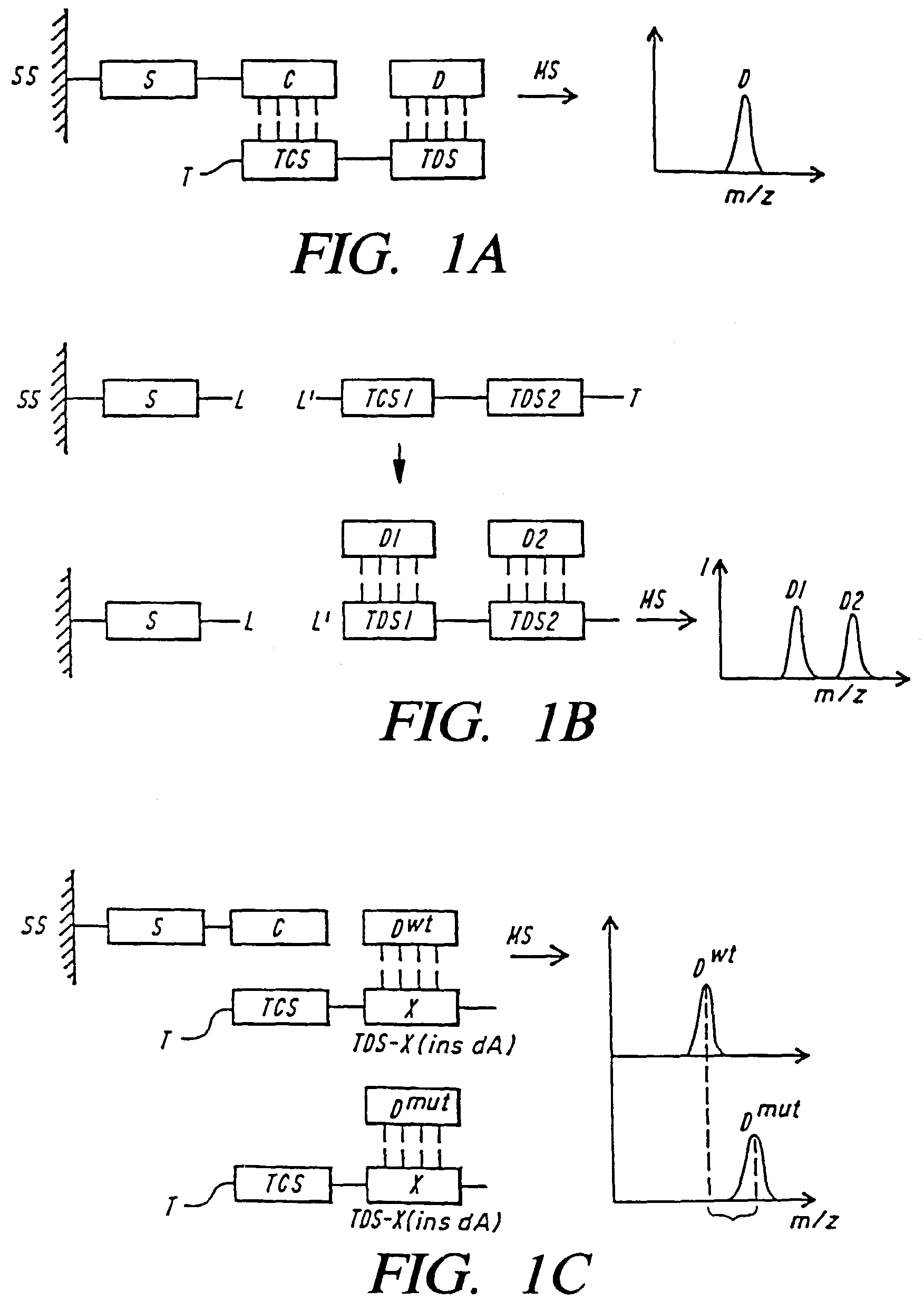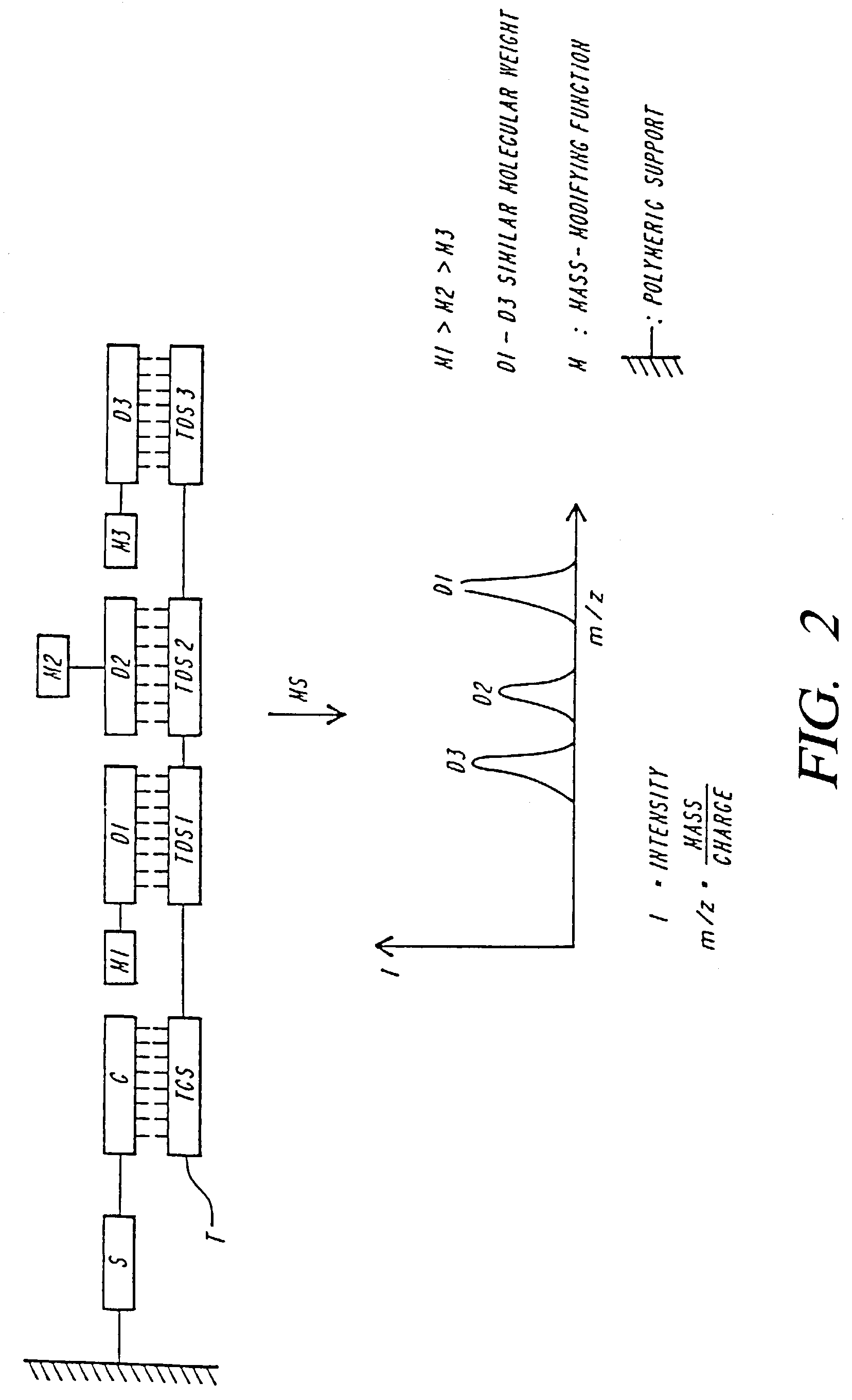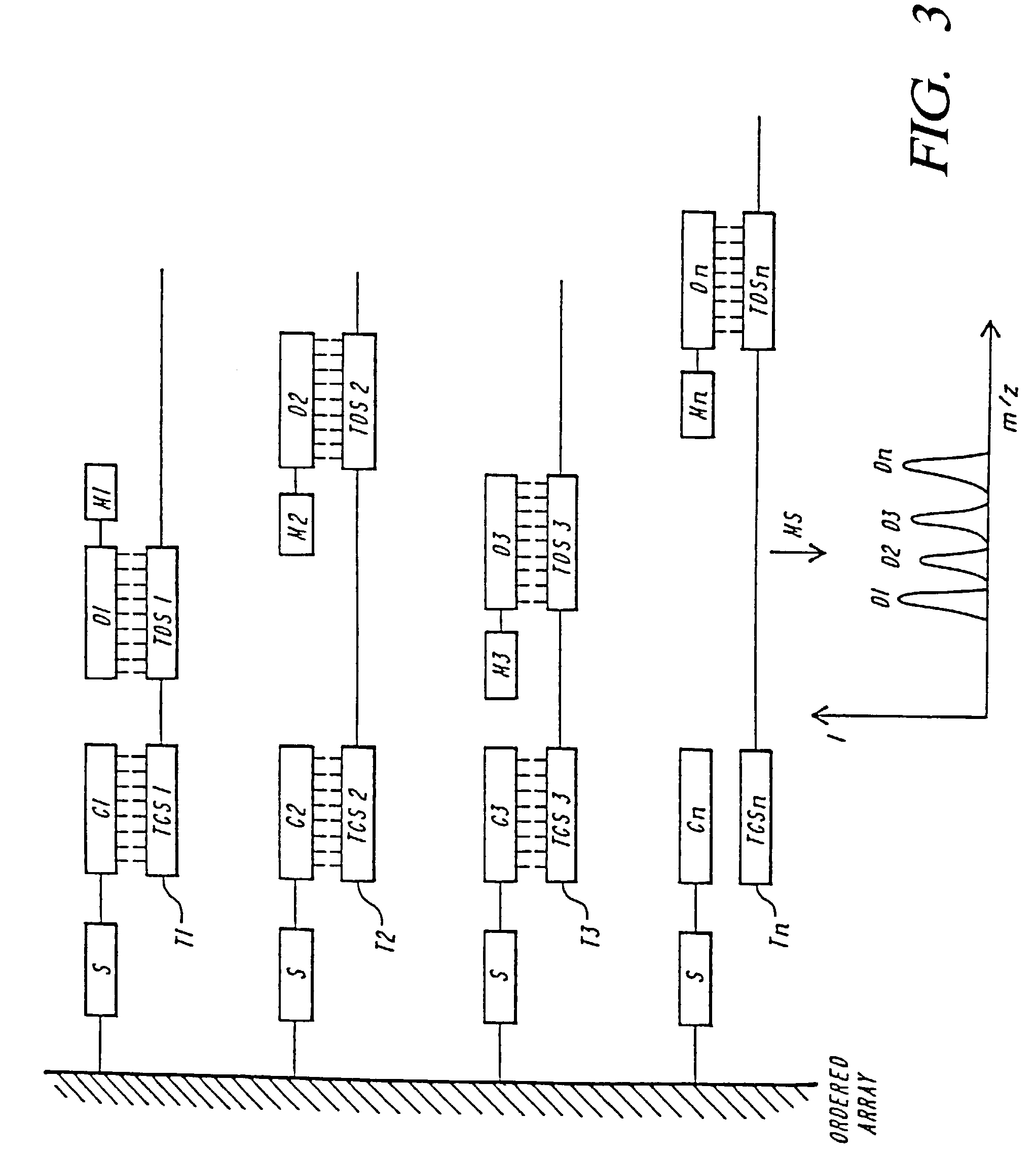Mass spectrometric methods for detecting mutations in a target nucleic acid
a mass spectrometric and target nucleic acid technology, applied in the field of mass spectrometric methods for detecting mutations in target nucleic acids, can solve the problems of only being able to identify, protein with altered or in some cases even lost biochemical activities, genetic diseases, etc., to achieve the effect of improving the accuracy and reliability of nucleic acid detection, facilitating the detection of small volumes of target nucleic acids, and reducing the cost of performing the operation
- Summary
- Abstract
- Description
- Claims
- Application Information
AI Technical Summary
Benefits of technology
Problems solved by technology
Method used
Image
Examples
example 1
MALDI-TOF Desorption of Oligonucleotides Directly on Solid Supports
[0129]1 g CPC (Controlled Pore Glass) was functionalized with 3-(triethoxysilyl)-epoxypropan to form OH-groups on the polymer surface. A standard oligonucleotide synthesis with 13 mg of the OH-CPG on a DNA synthesizer (Milligen, Model 7500) employing β-cyanoethyl-phosphoamidites (Sinha et al., Nucleic Acids Res. 12: 4539 (1984)) and TAC N-protecting groups (Köster et al., Tetrahedron 37: 362 (1981)) was performed to synthesize a 3′-T5-50-mer oligonucleotide sequence in which 50 nucleotides are complementary to a “hypothetical” 50-mer sequence. T5 serves as a spacer. Deprotection with saturated ammonia in methanol at room temperature for 2 hours furnished according to the determination of the DMT group CPG which contained about 10 μmol 55-mer / g CPG. This 55-mer served as a template for hybridizations with a 26-mer (with 5′-DMT group) and a 40-mer (without DMT group). The reaction volume is 100 μl and contains about 1 ...
example 2
Electrospray (ES) Desorption and Differentiation of an 18-mer and 19-mer
[0130]DNA fragments at a concentration of 50 pmole / μl in 2-propanol / 10 mM ammonium carbonate (1 / 9, v / v) were analyzed simultaneously by an electrospray mass spectrometer.
[0131]The successful desorption and differentiation of an 18-mer and 19-mer by electrospray mass spectrometry is shown in FIGS. 12A–12C.
example 3
Detection of the Cystic Fibrosis Mutation, ΔF508, by Single Step Dideoxy Extension and Analysis by MALDI-TOF Mass Spectrometry
Material and Methods
[0132]PCR Amplification and Strand Immobilization. Amplification was carried out with exon 10 specific primers using standard PCR conditions (30 cycles: 1′@95° C., 1′@55° C., 2′@72° C.); the reverse primer was 5′ labelled with biotin and column purified (Oligopurification Cartridge, Cruachem). After amplification the PCR products were purified by column separation (QIAGEN® Quickspin) and immobilized on streptavidin coated magnetic beads (DYNABEADS®, DYNAL®, Norway) according to their standard protocol; DNA was denatured using 0.1 M NaOH and washed with 0.1 M NaOH, 1×B+W buffer and TE buffer to remove the non-biotinylated sense strand.
[0133]COSBE Conditions. The beads containing ligated antisense strand were resuspended in 18 μl of Reaction mix (2 μl 10×Taq buffer, 1 μL (1 unit) Taq Polymerase, 2 μL of 2 mM dGTP, and 13 μL H2O) and incubate...
PUM
| Property | Measurement | Unit |
|---|---|---|
| Molecular weight | aaaaa | aaaaa |
Abstract
Description
Claims
Application Information
 Login to View More
Login to View More - R&D
- Intellectual Property
- Life Sciences
- Materials
- Tech Scout
- Unparalleled Data Quality
- Higher Quality Content
- 60% Fewer Hallucinations
Browse by: Latest US Patents, China's latest patents, Technical Efficacy Thesaurus, Application Domain, Technology Topic, Popular Technical Reports.
© 2025 PatSnap. All rights reserved.Legal|Privacy policy|Modern Slavery Act Transparency Statement|Sitemap|About US| Contact US: help@patsnap.com



